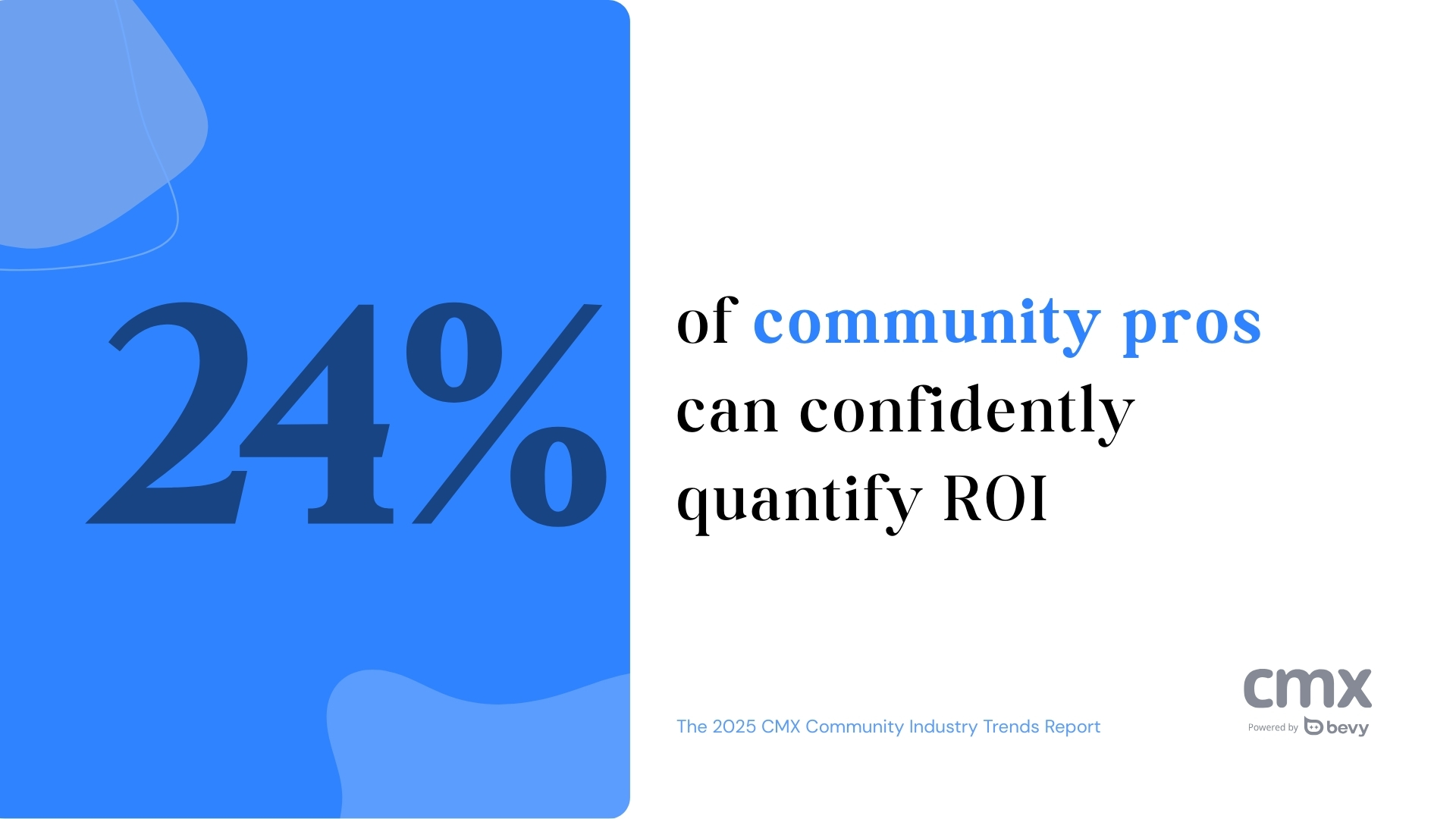If you’ve ever struggled to prove the impact of your community program, you’re not alone. Every year when we put together the Community Industry Report, ROI comes up as one of the biggest frustrations. Most of us know in our bones that community drives business outcomes—whether it’s protecting renewals, fueling advocacy, or even opening doors to net new customers. But the hard part has always been proving it in a way that makes sense to leadership. What the 2025 data shows us is that the missing link might not be effort, or creativity, or even strategy. It might be connection. Specifically, connecting your community data to your company’s CRM.
This year, we saw a striking difference in how community teams perceive their own success depending on whether they’ve integrated with their CRM. Teams that have connected their community data to customer data are twice as likely to rate themselves as “extremely successful” at impacting business goals. That’s not just a small lift—it’s a whole different level of confidence. Think about the difference between walking into a leadership meeting with a good story and walking in with a dashboard that ties community activity to $1M in influenced revenue. One is persuasive. The other is undeniable.
What the Data Tells Us
We asked respondents two simple but powerful questions: Does your community connect to your CRM? And how successful has your community been at driving business goals?
• 34% said yes, they have a CRM and it’s connected to their community data.
• 35% said they have a CRM, but it’s not connected.
• 23% don’t have a CRM at all.
When we look at their self-reported success, the picture gets clearer. Among CRM-connected teams, 24% said they’re “extremely successful.” Compare that to just 11% of teams with unconnected systems. And disconnected teams were more than twice as likely to rate themselves “hardly successful.”
The takeaway is simple but powerful: CRM-connected community teams aren’t just doing better work—they’re able to prove it. They can point to evidence. They have the receipts. And that changes how their work is perceived across the business.
Why This Connection Matters
A CRM isn’t just a database—it’s the central nervous system of how your company understands its customers. It’s where revenue, retention, and risk live. When community data is siloed, it’s easy for executives to see it as “extra.” Nice-to-have. Additive. But when it’s integrated into the same system they use to track pipeline and churn? Suddenly community isn’t just engagement—it’s revenue protection, account expansion, and retention fuel.
This is why CRM integration isn’t only a technical project. It’s a strategy shift. It’s about showing that community belongs in the same room, at the same table, and on the same dashboards as every other part of the customer journey.
What It Looks Like in Practice
You don’t need a million-dollar tech stack to make this happen. For some teams, it’s as simple as tagging contacts in Salesforce or HubSpot based on community membership. Others use tools like Orbit, Common Room, Threado, or Commsor to aggregate engagement data and sync it automatically. Some even start manually—logging major member contributions like speaking at an event, giving product feedback, or helping deflect a support ticket.
The point isn’t perfection. It’s progress. Every small step toward connecting the dots helps shift the narrative from “community is nice” to “community is driving outcomes.”
If You’re Not Ready for Full Integration Yet
Start where you are. Map your community efforts to one business goal using the SPACES Model—support, product, acquisition, content, engagement, or success. Pick one or two metrics tied to that goal. Create a feedback loop with one internal team, whether that’s Customer Success or Product. Even a spreadsheet that tracks engaged members who later convert, renew, or advocate can tell a better story than anecdotes alone. The more often you share those stories—dropping stats in Slack, including them in leadership updates—the more seriously your work will be taken.
A Final Thought
Community professionals already know the impact of their work. But vibes don’t get you a seat at the table—numbers do. CRM integration is one of the clearest ways we’ve seen to bridge that gap. It’s not about fancy software; it’s about strategy. It’s about putting your work in the language the business already understands. If you’re serious about elevating community in your org, this is the year to get serious about data integration.
Want more insights like this? Download the full 2025 CMX Community Industry Trends Report for all the trends, takeaways, and strategies shaping the future of our industry.








.svg)



.svg)

